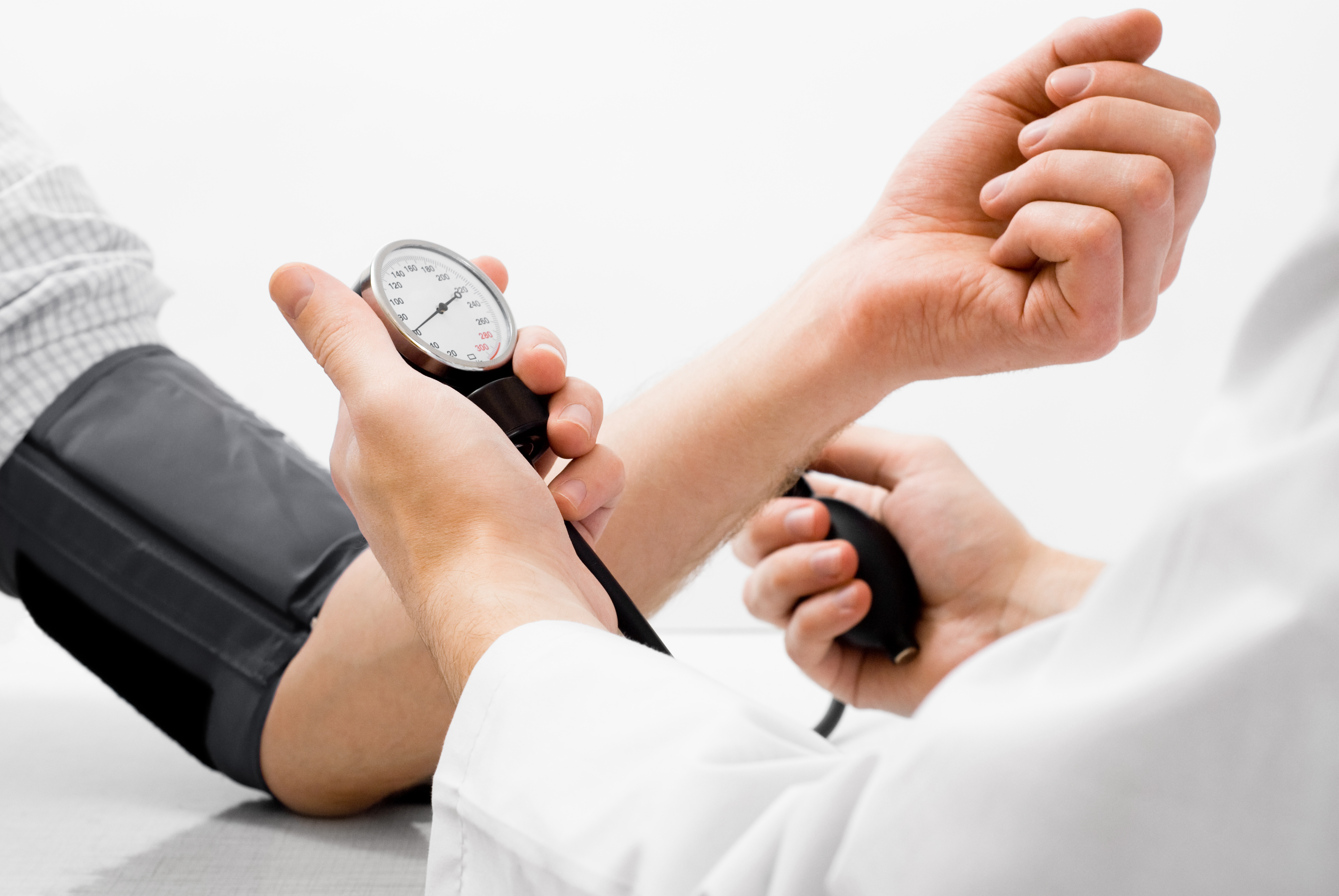Supporting Approaches to Managing Hypertension By Jun Wang, MS


Also known as high blood pressure, hypertension is a common condition that measures the force of blood against the artery walls as your heart pumps oxygen rich blood throughout your body. There is normally a little resistance from the arteries which carry the blood and as the resistance increases due to vascular damage and stiffening, more pressure is applied by the heart to force the blood through these channels to get to where it is needed. This condition can lead to heart attack (myocardial infarction), stroke, damage to the eyes, additional and mounting damage to the blood vessels and renal failure. According to data from the Center for Disease Control and Prevention (CDC), 360,000 Americans died from hypertension as a primary or contributing cause in 2013, about 1,000 deaths each day. About 70 million American adults (29%) have high blood pressure and the condition costs the U.S. $46 billion in healthcare each year.1 The Eighth Joint National Committee (JNC 8) hypertension guidelines state that normal blood pressure is considered to be less than 120/80 mmHg (systolic blood pressure/diastolic blood pressure);the prehypertension range is between 120-139/ 80-89 mmHg; stage 1 hypertension is between 140-159/90-99 mmHg; and stage 2 hypertension is greater than 160/100 mmHg.2 The conventional treatment for hypertension is medication, which can include an ACE Inhibitor or ARBs, Thiazide and Loop Diuretic, Beta blockers, and Calcium Channel Blocking Drugs. Treating hypertension effectively is very important and the use of these drugs can be considered lifesaving. However, these drugs can have negative side effects so reducing the need for very high dosages and the need for multiple drugs to achieve an acceptable range of blood pressure would be considered desirable by most. Additionally, there is the drug associated depleting effects of essential nutrients in the body by many of these drugs such as decreased Ubiquinol (the active form of Coenzyme Q10), vitamin B1, vitamin B6, vitamin C, Calcium, Magnesium, Phosphorus, Potassium and Zinc that occurs.3 You can check with your pharmacist for any depletion; simply replete the nutrient with the corresponding supplement. Here are several supporting approaches to help maintain a healthy range for blood pressure:
Weight Loss
A large research study conducted by Markus Marcello and his team at the Department Study of Health in Pomerania/Clinical-Epidemiological Research, the Institute for Community Medicine and the University Medicine Greifswald, involving 1,875 men and women between the ages of 20-81 indicates that a change of 1kg in body weight (2.2 pounds) is directly associated with a change of 0.45 mmHg in systolic blood pressure (the top figure in your blood pressure reading), accompanied with a 0.32 mmHg in diastolic blood pressure (the bottom figure), and a 0.36 mmHg drop in mean arterial pressure.4 Therefore, a ten pound drop in weight can decrease your blood pressure about 2/1.5 mmHg. However, weight loss is also linked to improving atrial fibrillation according to new data from the University of Adelaide in Australia. Atrial fibrillation (AF) is the most common arrhythmia of the heart (an abnormal beating pattern). AF occurs if rapid, disorganized electrical signals cause the heart’s two upper chambers—called the atria—to fibrillate. The term “fibrillate” means to contract very fast and irregularly. This is the second most common cause of stroke following hypertension. In the study which enrolled 355 obese patients with atrial fibrillation enrolled at a weight loss clinic, those who lost at least 10 percent of their body weight were six times more likely to achieve long-term freedom from this common heart rhythm disorder compared to those who did not lose weight, according to a study presented at the American College of Cardiology’s 64th Annual Scientific Session. The weight link to atrial fibrillation study is published in the November 20 Cardiology/Cardiovascular Disease–themed issue of JAMA.
Dietary Approach
The American Heart Association (AHA) recommends limiting the daily intake of sodium to 1.5 grams, because sodium retains fluid in the body and creates burden to the heart5. The AHA also recommends maintaining the daily intake of potassium of around 4.7 grams, because potassium lessens the effects of sodium.6 Unfortunately, according to the NHANES survey, only 2% of all American adults get enough potassium in their diet and the majority of these are men. NHANES (The National Health and Nutrition Examination Survey) is a program of studies designed to assess the health and nutritional status of adults and children in the United States. The survey is unique in that it combines interviews and physical examinations.
Patients taking ACE inhibitors and ARBs drugs to control their blood pressure may have enough potassium in their blood because these drugs partially work by causing potassium retention. NSAIDs may also cause some level of potassium retention. Additionally, patients that have chronic kidney disease or chronic heart failure have to be evaluated for their potassium level; although most Americans do not consume anywhere near enough potassium, too much can be dangerous.
Dietary Approaches to Stop Hypertension (DASH) is a flexible and balanced eating plan that is based on research studies and specifically designed to lower blood pressure. The DASH diet focuses on the intake of fruits, vegetables, fat-free or low-fat dairy products, which includes whole grains, fish, poultry, beans, seeds, nuts and vegetable oils. The diet also limits the intake of sodium, sweets, sugary beverages and red meats. A typical day on the DASH diet would consist of –
- 4-5 serving of fruits
- 4-5 serving of vegetables
- 7-8oz of grains
- 6oz or less of meat, poultry or fish
- 4-5 servings of nuts and beans
- 2-3 cups of dairy
- 2-3 teaspoons of oils
- 2 teaspoon sugar
The DASH diet is low in saturated and trans-fats and rich in potassium, calcium, magnesium, fiber, and protein, along with the antioxidant pigments such as polyphenols and carotenoids found in produce. All of these components make this diet one of the best for cardiovascular health.
Physical Activity Approach
Exercise improves your metabolism and burns extra fat in the body while strengthening your heart function. Exercise improves circulation, easing the flow of blood in the blood vessels. The Department of Health and Human Services recommends getting at least 150 minutes of moderate aerobic activity or 75 minutes of vigorous aerobic activity a week.7 Some exercises such as yoga, Tai Chi and meditation can help relieve stress. Stress reduction is a major contribution to maintaining normal blood pressure.
Nutritional supplement approach
Here is a short list of nutritional supplements that are beneficial in helping manage hypertension safely:
Fish oil
Fish oil supplies the essential fatty acids EPA and DHA, which have very mild anti-coagulant and very good anti-inflammatory effects to support the smooth flow of blood in arteries while reducing inflammation in arterial walls. A meta-analysis of 31 trials concludes that fish oil has a statistically significant dose-response effect on lowering blood pressure: daily intake of 3 grams of fish oil per day (with meals for better absorption) can reduce blood pressure 1.3/0.7 mm Hg, daily intake of 3.3-7 grams can reduce pressure 2.9/-1.6 mm Hg, and daily intake of 15 gram can reduce pressure 8.1/5.8 mm Hg.8 However, these larger servings of fish oils, exceeding 3 grams per day, have a blood thinning effect.
L-citrulline/L-arginine
L-citrulline, found in watermelon, is converted to L-arginine in the kidneys; this is the precursor to nitric oxide (NO). Just like a pump inflating a tire, NO, a gas, pumps open your blood vessels for smoother blood flow. NO is produced in the endothelial lining of the blood vessel, the lining closest to the blood, which helps lower blood pressure by promoting the flow of blood.9
Grape seed extract
Oligomeric Proanthocyanidins are the active constituents in grape seed extract (GSE); they are very powerful antioxidants. GSE can help prevent, and possibly even help reverse blood vessel oxidation that results in damage, stiffness and clogging. GSE dilates blood vessels and promotes improved circulation. A systematic review including 9 randomized and controlled trials illustrates that GSE can significantly systolic blood pressure.10 Research from the University of California, Davis in subjects with metabolic syndrome (a cluster of conditions that shorten your lifespan usually encompassing central obesity, hypertension, elevated sugar/cholesterol/triglycerides and inflammation) shows that GSE can have a powerful effect in lowering blood pressure in these subjects. The results from the study published in the December 2009 issue of the journal Metabolism, shows that GSE significantly lowers elevated systolic as well as diastolic blood pressure.
Read more on Antioxidants and Blood Pressure here – “Antioxidants may protect the Blood Vessels and Kidneys of Patients with Hypertension”
Probiotic Bacteria
We all should have trillions of bacteria, pounds, living in us and on us; this is commonly referred to as the microbiome. A supplement of bacteria to support the activities of the good ones is called a Probiotic. A recent review of nine published human clinical trials including almost 550 subjects shows that a probiotic supplement can modestly and very safely, lower blood pressure. The reductions in systolic and diastolic blood pressure were approximately 3.5 and 2.4 mm Hg, respectively, although investigators observed larger reductions among individuals with elevated blood pressure at baseline (the start of the study before supplementation) and for those who consumed probiotics that supplied multiple species. “However, even a small reduction of blood pressure may have important public-health benefits and cardiovascular consequences,” states Dr Saman Khalesi from Griffith University in an article published July 21, 2014 in the journal Hypertension. Researchers point out that the Heart Outcomes Prevention Evaluation (HOPE) study showed a 3.3-mm-Hg reduction in systolic blood pressure, along with a 1.4-mm-Hg reduction in diastolic blood pressure are associated with a 22% relative reduction in risk of cardiovascular mortality, heart attack, or stroke.
Read this study on Probiotics and High Blood Pressure – “Probiotic intestinal bacteria may help high blood pressure”
Adopting good dietary habits, exercising moderately, and perhaps choosing particular supplements are important facets for maintaining a healthy lifestyle. The DASH diet has been proven to effectively lower blood pressure. But the premium quality of dietary supplements can also provide additional aids to manage blood pressure, in both safe and natural ways.
For a full list of References, click here!